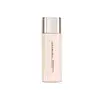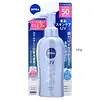What's inside
What's inside
 Key Ingredients
Key Ingredients

 Benefits
Benefits

 Concerns
Concerns

 Ingredients Side-by-side
Ingredients Side-by-side

Water
Skin ConditioningEthylhexyl Methoxycinnamate
UV AbsorberTitanium Dioxide
Cosmetic ColorantPropanediol
SolventGlycerin
HumectantButylene Glycol
HumectantDiethylhexyl 2,6-Naphthalate
EmollientHomosalate
Skin ConditioningNiacinamide
SmoothingEthylhexyl Salicylate
UV AbsorberCaprylic/Capric Triglyceride
Masking1,2-Hexanediol
Skin ConditioningAlcohol Denat.
AntimicrobialPentylene Glycol
Skin ConditioningPolyhydroxystearic Acid
EmulsifyingVp/Eicosene Copolymer
Polysorbate 60
EmulsifyingHydroxyethyl Acrylate/Sodium Acryloyldimethyl Taurate Copolymer
Emulsion StabilisingTriethoxycaprylylsilane
Cetyl PEG/PPG-10/1 Dimethicone
EmulsifyingParfum
MaskingAmmonium Acryloyldimethyltaurate/Vp Copolymer
Dicaprylyl Carbonate
EmollientAlumina
AbrasiveSqualane
EmollientStearic Acid
CleansingDimethicone
EmollientAluminum Hydroxide
EmollientMethyl Hydrogenated Rosinate
PerfumingHydroxypropyl Methylcellulose Stearoxy Ether
Ethylhexylglycerin
Skin ConditioningPolyacrylate Crosspolymer-6
Emulsion StabilisingNeopentyl Glycol Diethylhexanoate
EmollientSodium Stearoyl Glutamate
CleansingCI 77491
Cosmetic ColorantAdenosine
Skin ConditioningSodium Polyacrylate
AbsorbentCI 77492
Cosmetic ColorantCitric Acid
BufferingPolyether-1
Sorbitan Isostearate
EmulsifyingT-Butyl Alcohol
PerfumingHydrolyzed Sodium Hyaluronate
Skin ConditioningOpuntia Coccinellifera Fruit Extract
Skin ConditioningSaccharide Isomerate
HumectantAgave Tequilana Leaf Extract
AstringentTocopherol
AntioxidantHydrogenated Lecithin
EmulsifyingPolyglyceryl-10 Stearate
Skin ConditioningSodium Hyaluronate
HumectantRose Extract
Skin ConditioningPanthenol
Skin ConditioningSodium Citrate
BufferingTocopheryl Acetate
AntioxidantSodium Ascorbyl Phosphate
AntioxidantHydroxypropyltrimonium Hyaluronate
Hydrolyzed Hyaluronic Acid
HumectantSodium Acetylated Hyaluronate
HumectantBiotin
AntiseborrhoeicRetinyl Palmitate
Skin ConditioningPyridoxine
Skin ConditioningFolic Acid
Skin ConditioningThiamine Hcl
MaskingHyaluronic Acid
HumectantSodium Hyaluronate Crosspolymer
HumectantCyanocobalamin
Skin ConditioningPotassium Hyaluronate
Skin ConditioningWater, Ethylhexyl Methoxycinnamate, Titanium Dioxide, Propanediol, Glycerin, Butylene Glycol, Diethylhexyl 2,6-Naphthalate, Homosalate, Niacinamide, Ethylhexyl Salicylate, Caprylic/Capric Triglyceride, 1,2-Hexanediol, Alcohol Denat., Pentylene Glycol, Polyhydroxystearic Acid, Vp/Eicosene Copolymer, Polysorbate 60, Hydroxyethyl Acrylate/Sodium Acryloyldimethyl Taurate Copolymer, Triethoxycaprylylsilane, Cetyl PEG/PPG-10/1 Dimethicone, Parfum, Ammonium Acryloyldimethyltaurate/Vp Copolymer, Dicaprylyl Carbonate, Alumina, Squalane, Stearic Acid, Dimethicone, Aluminum Hydroxide, Methyl Hydrogenated Rosinate, Hydroxypropyl Methylcellulose Stearoxy Ether, Ethylhexylglycerin, Polyacrylate Crosspolymer-6, Neopentyl Glycol Diethylhexanoate, Sodium Stearoyl Glutamate, CI 77491, Adenosine, Sodium Polyacrylate, CI 77492, Citric Acid, Polyether-1, Sorbitan Isostearate, T-Butyl Alcohol, Hydrolyzed Sodium Hyaluronate, Opuntia Coccinellifera Fruit Extract, Saccharide Isomerate, Agave Tequilana Leaf Extract, Tocopherol, Hydrogenated Lecithin, Polyglyceryl-10 Stearate, Sodium Hyaluronate, Rose Extract, Panthenol, Sodium Citrate, Tocopheryl Acetate, Sodium Ascorbyl Phosphate, Hydroxypropyltrimonium Hyaluronate, Hydrolyzed Hyaluronic Acid, Sodium Acetylated Hyaluronate, Biotin, Retinyl Palmitate, Pyridoxine, Folic Acid, Thiamine Hcl, Hyaluronic Acid, Sodium Hyaluronate Crosspolymer, Cyanocobalamin, Potassium Hyaluronate
Water
Skin ConditioningEthylhexyl Methoxycinnamate
UV AbsorberAlcohol Denat.
AntimicrobialPropylene Glycol
HumectantDimethicone
EmollientEthylhexyl Triazone
UV AbsorberDiethylamino Hydroxybenzoyl Hexyl Benzoate
UV FilterButylene Glycol
HumectantLysine Lauroyl Glutamate
CleansingPyrus Cydonia Seed Extract
MaskingGeranium Robertianum Extract
AstringentPhellodendron Amurense Bark Extract
Skin ConditioningSodium Hyaluronate
HumectantAcrylates/C10-30 Alkyl Acrylate Crosspolymer
Emulsion StabilisingCarbomer
Emulsion StabilisingTocopheryl Acetate
AntioxidantSodium Hydroxide
BufferingBHT
AntioxidantMethylparaben
PreservativeWater, Ethylhexyl Methoxycinnamate, Alcohol Denat., Propylene Glycol, Dimethicone, Ethylhexyl Triazone, Diethylamino Hydroxybenzoyl Hexyl Benzoate, Butylene Glycol, Lysine Lauroyl Glutamate, Pyrus Cydonia Seed Extract, Geranium Robertianum Extract, Phellodendron Amurense Bark Extract, Sodium Hyaluronate, Acrylates/C10-30 Alkyl Acrylate Crosspolymer, Carbomer, Tocopheryl Acetate, Sodium Hydroxide, BHT, Methylparaben
 Reviews
Reviews

Ingredients Explained
These ingredients are found in both products.
Ingredients higher up in an ingredient list are typically present in a larger amount.
Alcohol Denat. is an alcohol with a denaturant property. It is created by mixing ethanol with other additives.
This ingredient gets a bad rep because it is irritating and drying - mostly due to its astringent property. Astringents draw out natural oils in tissue, constricting pores and leaving your skin dried out.
However, alcohol denat. is not all that bad.
Due to its low molecular weight, alcohol denat. tends to evaporate quickly. One study on pig skin found half of applied alcohol evaporated in 10 seconds and less than 3% stayed on skin.
This also helps other ingredients become better absorbed upon application.
Studies are conflicted about whether this ingredient causes skin dehydration. One study from 2005 found adding emollients to propanol-based sanitizer decreased skin dryness and irritation. Another study found irritation only occurs if your skin is already damaged.
Small amounts of alcohol are generally tolerated by oily skin or people who live in humid environments.
The rule of thumb is if this alcohol is near the end of an ingredients list, it will probably not affect your skin much.
Also...
This ingredient has antimicrobial and solvent properties.
The antimicrobial property helps preserve products and increase their shelf life. As a solvent, it helps dissolve other ingredients.
Other types of astringent alcohols include:
Learn more about Alcohol Denat.Butylene Glycol (or BG) is used within cosmetic products for a few different reasons:
Overall, Butylene Glycol is a safe and well-rounded ingredient that works well with other ingredients.
Though this ingredient works well with most skin types, some people with sensitive skin may experience a reaction such as allergic rashes, closed comedones, or itchiness.
Learn more about Butylene GlycolDimethicone is a type of synthetic silicone created from natural materials such as quartz.
What it does:
Dimethicone comes in different viscosities:
Depending on the viscosity, dimethicone has different properties.
Ingredients lists don't always show which type is used, so we recommend reaching out to the brand if you have questions about the viscosity.
This ingredient is unlikely to cause irritation because it does not get absorbed into skin. However, people with silicone allergies should be careful about using this ingredient.
Note: Dimethicone may contribute to pilling. This is because it is not oil or water soluble, so pilling may occur when layered with products. When mixed with heavy oils in a formula, the outcome is also quite greasy.
Learn more about DimethiconeEthylhexyl Methoxycinnamate is an organic compound that provides UVB protection. It often goes by the more common name of octinoxate. It is created from methoxycinnamic acid and 2-ethylhexanol.
Ethylhexyl Methoxycinnamate absorbs UVB rays with wavelengths between 280-320 nm. UV absorbers protect your skin by using chemical reactions to convert UV rays into heat and energy.
UVB (290-320 nm) rays emit more energy than UVA rays. They are capable of damaging DNA, causing sunburns and are thought to be linked to skin cancer.
The state of Hawaii has banned sunscreens containing octinoxate due to its potential impact on coral reefs. More research is needed to bridge gaps in this research. The European Union allows higher levels of octinoxate in sunscreens than the US and Australia.
Ethylhexyl Methoxycinnamate is oil soluble. It is not stable and may lose efficacy when exposed to sunlight.
Learn more about Ethylhexyl MethoxycinnamateSodium Hyaluronate is hyaluronic acid's salt form. It is commonly derived from the sodium salt of hyaluronic acid.
Like hyaluronic acid, it is great at holding water and acts as a humectant. This makes it a great skin hydrating ingredient.
Sodium Hyaluronate is naturally occurring in our bodies and is mostly found in eye fluid and joints.
These are some other common types of Hyaluronic Acid:
Learn more about Sodium HyaluronateTocopheryl Acetate is AKA Vitamin E. It is an antioxidant and protects your skin from free radicals. Free radicals damage the skin by breaking down collagen.
One study found using Tocopheryl Acetate with Vitamin C decreased the number of sunburned cells.
Tocopheryl Acetate is commonly found in both skincare and dietary supplements.
Learn more about Tocopheryl AcetateWater. It's the most common cosmetic ingredient of all. You'll usually see it at the top of ingredient lists, meaning that it makes up the largest part of the product.
So why is it so popular? Water most often acts as a solvent - this means that it helps dissolve other ingredients into the formulation.
You'll also recognize water as that liquid we all need to stay alive. If you see this, drink a glass of water. Stay hydrated!
Learn more about Water